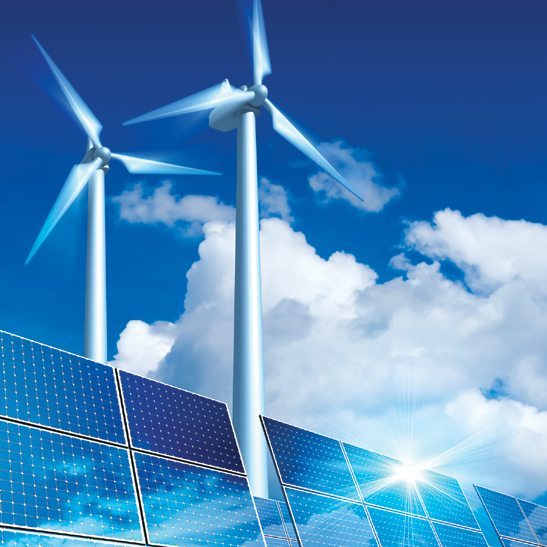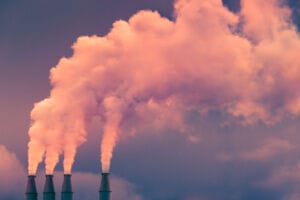Search for the word “sustainability” on Google and you’ll end up with nearly 25 million hits. But what does sustainability mean to Arizona, especially as the state’s economy crawls out of the crater left behind by the recession?
“The word sustainability and the word green means different things to different people — it’s more than just environmental technologies … The real question is how is the concept of sustainability affecting businesses at large. Because sustainability is a business issue,” said Rob Melnick, executive dean of the Global Institute of Sustainability/School of Sustainability at Arizona State University.
Though 2009 proved to be a difficult year economically, it was a landmark year for the green industry in the Grand Canyon State.
In October 2009, Clean Edge Inc., a research and publishing firm devoted to the clean-tech sector, listed Phoenix in the top 15 U.S. metro areas for clean-tech job activity. Phoenix was in the company of established cities in the industry such as San Francisco, Oakland and San Jose, Calif., as well as Denver, Boulder and Greeley, Colo.
A month later, Gov. Jan Brewer signed Senate Bill 1403 into law, creating the Renewable Energy Incentive Program, which provides refundable tax credits and property tax reductions for manufacturers.
“That sent a resounding alert to the industry that Arizona was serious about becoming a global leader in the renewable energy sectors,” said David Drennon, spokesperson for the Arizona Department of Commerce. “The result has been a solid response in companies — particularly in the solar industry — to consider establishing operations in Arizona. It means investment in our state and jobs for Arizonans.”
In her State of the State address in January, Brewer reinforced her belief that the sustanability industry will have a positive effect on the state’s economic recovery.
“We celebrate significant progress in establishing our foothold in the solar industry, and in advancing our competitive position in the national and global economy,” she said. “Our goal is to land the top solar manufacturers in the world and we are well on our way.”
School of Sustainability building at ASU
The School of Sustainability at Arizona State University has done much to advance the state’s reputation in the global green industry.
And on the federal level, President Barack Obama in January unveiled $2.3 billion in Recovery Act Advanced Energy Manufacturing tax credits for clean energy manufacturing projects across the United States. Companies with plans to build in Arizona requested nearly $30 million in tax credits. In a release announcing the funds, Obama stated, “Building a robust clean-energy sector is how we will create the jobs of the future. (The credits) will help close the clean-energy gap that has grown between America and other nations, while creating good jobs, reducing our carbon emissions and increasing our energy security.”
Slow Beginnings
Although the Renewable Energy Incentive Program signaled the state’s shift toward a valid future in the green sector, Arizona still has a way to go before catching up to other states.
A new study by the nonprofit research group Next 10 found that between 1995 and 2008, California had a 2.4 percent annual growth rate in its core green-economy employment. The study also found that although total jobs in California decreased 1 percent between January 2007 and January 2008, green jobs increased 5 percent.
“The state has to make some strategic investments,” Melnick said. “It’s got to be creative about regulation, work force development, finance and marketing itself. Right now, no one is saying Arizona is the green job capital of the world. We really could have been the solar capital of the world 20 years ago. We were growing so fast and so rich, but now we need it.”
Barry Broome, president and CEO of the Greater Phoenix Economic Council (GPEC) echoes these sentiments.
“It’s a very policy-specific industry,” Broome said. “We have to think critically about energy policy, planning and community economic development.”
Now more than ever, Arizona needs to take the right steps in securing the industry as a valuable economic engine.
Green Jobs
The burgeoning sustainability industry is growing green jobs, bringing the prospect of much-needed employment to the state.
Brewer recently announced that one of the world’s largest solar-cell manufacturers, China-based Suntech Power Holdings, will bring its U.S. headquarters to the West Valley this year. Suntech, a multibillion-dollar corporation that makes photovoltaic solar cells and solar electric systems, will potentially be one of the first companies eligible for the Renewable Energy Incentive Program.
“We did quite an extensive search around the country,” said Steven Chan, chief strategy officer of Suntech Power Holdings. “(Arizona) had a combination of a strong potential market, very supportive policies and incentives, and very good educational institutions.”
The plant is set to open in Goodyear and is expected to begin production in the third quarter of this year, with an initial production capacity of 30 megawatts. The 80,000 to 100,000-square-foot plant will be designed with growth in mind, due to the anticipated expansion of the U.S. solar market.
Suntech announced it is expecting up to 150 jobs for the company’s first phase — 75 at launch, with the potential to double within the year. The plant will have a variety of jobs that will be focused mostly on manufacturing and operations.
“We’re looking forward to building a long-term base for Suntech in Arizona. We feel that both in Arizona and across the U.S. there is a promising future for a green work force,” Chan said.
Another manufacturer also has announced plans for an Arizona presence — and it comes from an unlikely source. Tower Automotive, a producer of structural metal components for the automobile industry, plans to invest $50 million in an Arizona plant. The decline of the U.S. auto industry hurt the company and spurred it to diversify its product line. The plant will manufacture mirror assemblies for solar-power systems and will employ about 200 people.




